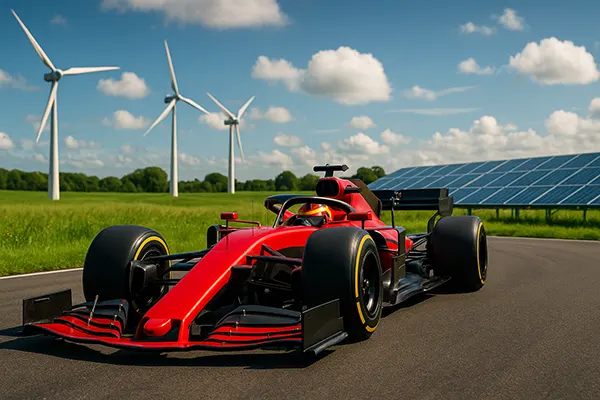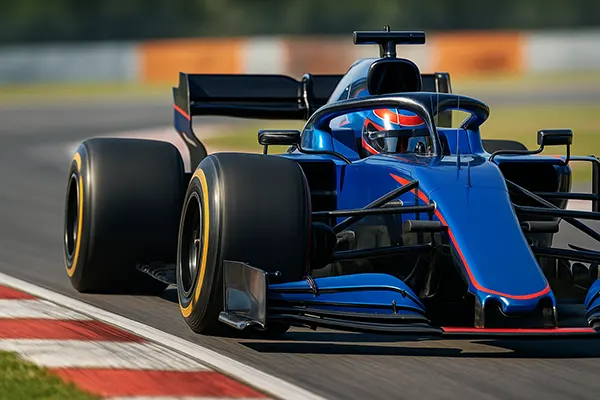Similar articles
Renewable Energy Technologies in Formula 1: How the FIA Implements Environmental Standards

Formula 1 has long been associated with high-speed racing, cutting-edge engineering, and global prestige. However, in recent years, the sport has also taken on a new challenge — environmental responsibility. As concerns about climate change and carbon emissions intensify, the Fédération Internationale de l’Automobile (FIA) has begun integrating renewable energy technologies and sustainability standards into the very heart of Formula 1. As of February 2025, several notable milestones mark this transformation, with more innovation still ahead.
Hybrid Power Units and Sustainable Fuel
One of the most visible advances in sustainable racing is the development of hybrid power units. Since 2014, F1 cars have featured engines that combine traditional internal combustion with electric motor systems. These hybrid units are not only more fuel-efficient but also recover and reuse energy through regenerative braking and heat recovery systems. By 2025, the energy recovery systems (ERS) have evolved to capture more kinetic and thermal energy than ever before.
In parallel, the FIA has pushed for the development of sustainable fuels. From the 2022 season, Formula 1 introduced E10 fuel — a blend containing 10% ethanol. The long-term plan, however, goes further: by 2026, the sport aims to run on 100% sustainable fuel, made entirely from non-fossil sources such as biomass, waste products, and synthetic alternatives. These fuels are engineered to match traditional fuels in performance but drastically reduce carbon emissions.
This combination of hybrid power and clean fuel ensures that F1 remains a technological pioneer while reducing its environmental footprint. Moreover, the same technologies being developed for racing may soon filter into commercial automotive industries, bringing broader sustainability benefits.
Energy Recovery Systems and Efficiency
Energy recovery systems in F1 have seen significant advancements, transforming waste into usable power. The MGU-K (Motor Generator Unit – Kinetic) converts braking energy into electrical energy stored in batteries, while the MGU-H (Motor Generator Unit – Heat) captures energy from turbocharger heat. These systems work together to support acceleration and optimise energy use.
FIA regulations set strict limits on fuel consumption and energy deployment, pushing teams to design more efficient systems. This has spurred innovation in lightweight materials, heat dissipation, and smart energy distribution technologies. In effect, racing teams have become leaders in renewable energy application under extreme performance conditions.
Teams like Mercedes and Red Bull have already surpassed thermal efficiency rates above 50% in their power units — a significant engineering feat. These achievements not only meet FIA targets but also represent benchmarks that challenge the wider automotive world to adopt similar efficiencies.
Renewable Energy in Operations and Logistics
Beyond the racetrack, the FIA and Formula 1 are overhauling operational practices to align with environmental goals. This includes reducing the sport’s logistical carbon footprint — a major contributor to overall emissions. As of 2025, most F1 teams use biofuels or renewable diesel in their logistics fleets and ground transport operations, cutting dependence on traditional fossil fuels.
Many team headquarters and F1 facilities now rely on renewable electricity, including solar and wind power. For example, McLaren’s Technology Centre has reached 100% renewable electricity usage, while other teams follow suit with solar installations and energy-efficient cooling systems. Formula 1’s broadcast and media production have also become more sustainable through cloud-based workflows and energy-conscious broadcasting.
Moreover, the FIA has introduced a carbon accounting framework that requires teams to track and report emissions annually. This accountability encourages operational transparency and further motivates eco-conscious decision-making throughout the sport’s ecosystem.
Carbon Offsetting and Net-Zero Goals
The FIA has committed to achieving net-zero carbon emissions across Formula 1 by 2030. To meet this target, a comprehensive carbon offsetting strategy has been deployed. This includes investing in reforestation, renewable energy infrastructure, and certified carbon offset projects that balance out unavoidable emissions from races and logistics.
These offsets are not seen as a permanent solution but a transitional tool while sustainable technologies mature. FIA emphasises that real reduction comes first — offsetting only applies to emissions that cannot yet be eliminated through current technology.
In addition, the FIA has launched an internal certification programme — the FIA Environmental Accreditation — to rate teams, circuits, and promoters based on sustainability practices. Many circuits, including Silverstone and Circuit de Barcelona-Catalunya, have already achieved three-star ratings under this system, reflecting their comprehensive environmental efforts.

Innovation for a Greener Motorsport Future
As F1 looks toward a sustainable future, it continues to act as a proving ground for green innovation. The 2026 technical regulations are set to mandate power units that run exclusively on fully sustainable fuels and increase the electrical component of hybrid systems. This shift will require significant investment in battery technology, thermal control, and electrical system integration — areas where F1 already leads globally.
The FIA also encourages development of eco-friendly materials. Teams are researching recyclable carbon composites and low-impact paint coatings that reduce manufacturing emissions. These materials are expected to redefine the construction of race cars in the coming decade, ensuring environmental responsibility at the structural level.
Finally, Formula 1’s growing collaboration with academic and energy institutions — including partnerships with biofuel startups and battery researchers — demonstrates the sport’s commitment to long-term environmental leadership. These partnerships accelerate real-world applications, proving that elite motorsport and sustainability can not only coexist but thrive together.
Inspiring Global Change Through Visibility
F1’s transformation into a more sustainable sport has implications far beyond racing. With a global viewership exceeding 400 million, its actions set an example for industries and individuals worldwide. Each green milestone — from electric recovery to sustainable logistics — is broadcast to millions, promoting wider environmental awareness.
The FIA also uses its influence to encourage lower-tier racing series, such as Formula 2 and Formula E, to adopt similar standards. This cascading effect helps shift the entire motorsport industry towards sustainable practices, making environmental goals achievable at every level.
By continuing to innovate, regulate, and inspire, Formula 1 reinforces the message that environmental sustainability is not a limitation, but a platform for excellence. In 2025, the sport proves that speed and sustainability can share the same track.



